-
 Bitcoin
Bitcoin $106,754.6083
1.33% -
 Ethereum
Ethereum $2,625.8249
3.80% -
 Tether USDt
Tether USDt $1.0001
-0.03% -
 XRP
XRP $2.1891
1.67% -
 BNB
BNB $654.5220
0.66% -
 Solana
Solana $156.9428
7.28% -
 USDC
USDC $0.9998
0.00% -
 Dogecoin
Dogecoin $0.1780
1.14% -
 TRON
TRON $0.2706
-0.16% -
 Cardano
Cardano $0.6470
2.77% -
 Hyperliquid
Hyperliquid $44.6467
10.24% -
 Sui
Sui $3.1128
3.86% -
 Bitcoin Cash
Bitcoin Cash $455.7646
3.00% -
 Chainlink
Chainlink $13.6858
4.08% -
 UNUS SED LEO
UNUS SED LEO $9.2682
0.21% -
 Avalanche
Avalanche $19.7433
3.79% -
 Stellar
Stellar $0.2616
1.64% -
 Toncoin
Toncoin $3.0222
2.19% -
 Shiba Inu
Shiba Inu $0.0...01220
1.49% -
 Hedera
Hedera $0.1580
2.75% -
 Litecoin
Litecoin $87.4964
2.29% -
 Polkadot
Polkadot $3.8958
3.05% -
 Ethena USDe
Ethena USDe $1.0000
-0.04% -
 Monero
Monero $317.2263
0.26% -
 Bitget Token
Bitget Token $4.5985
1.68% -
 Dai
Dai $0.9999
0.00% -
 Pepe
Pepe $0.0...01140
2.44% -
 Uniswap
Uniswap $7.6065
5.29% -
 Pi
Pi $0.6042
-2.00% -
 Aave
Aave $289.6343
6.02%
How to view the extreme contraction of the narrow Bollinger band? How to capture the explosive market start signal?
Bollinger Bands, developed by John Bollinger, help traders identify market volatility and potential price movements in cryptocurrency trading.
Jun 08, 2025 at 02:28 am

Understanding Bollinger Bands
Bollinger Bands are a technical analysis tool developed by John Bollinger. They consist of a middle band being a simple moving average (SMA) and two outer bands that are standard deviations away from the middle band. The standard setting for Bollinger Bands is a 20-day SMA with the outer bands set at two standard deviations from the middle band. The primary use of Bollinger Bands is to measure market volatility and identify potential overbought or oversold conditions.
Identifying Extreme Contraction of Narrow Bollinger Bands
Extreme contraction of the Bollinger Bands occurs when the distance between the upper and lower bands narrows significantly. This indicates a period of low volatility in the market. Traders often view this as a precursor to a significant price movement, as the market cannot remain in a low volatility state indefinitely.
To view the extreme contraction of narrow Bollinger Bands, follow these steps:
- Choose a reliable charting platform: Platforms like TradingView, MetaTrader, or Coinbase Pro offer customizable charts where you can add Bollinger Bands.
- Add Bollinger Bands to the chart: Select the Bollinger Bands indicator from the list of available indicators. Set the parameters to the standard 20-day SMA with two standard deviations.
- Observe the bands: Look for periods where the bands are closer together than usual. This can be visually identified by comparing the current distance between the bands to historical data.
- Use additional tools: Some traders use the Bollinger Bandwidth indicator to quantify the contraction. The Bandwidth is calculated as (Upper Band - Lower Band) / Middle Band. A lower Bandwidth value indicates a narrower band.
Capturing the Explosive Market Start Signal
An explosive market start signal often follows the extreme contraction of Bollinger Bands. The breakout from the narrow bands can signify the beginning of a significant price movement. To capture this signal effectively, traders need to be vigilant and ready to act quickly.
Here's how to capture the explosive market start signal:
- Set up alerts: Use the charting platform's alert feature to notify you when the price breaks above the upper Bollinger Band or below the lower Bollinger Band. This can be crucial for timely action.
- Confirm with volume: A genuine breakout is often accompanied by an increase in trading volume. Look for volume spikes to validate the breakout signal.
- Use other indicators: Combine Bollinger Bands with other technical indicators like the Relative Strength Index (RSI) or Moving Average Convergence Divergence (MACD) to confirm the breakout. For instance, an RSI moving out of the oversold or overbought territory can provide additional confirmation.
- Enter the trade: Once the breakout is confirmed, enter a long position if the price breaks above the upper band, or a short position if it breaks below the lower band. Set appropriate stop-loss and take-profit levels to manage risk.
Practical Example of Using Bollinger Bands in Cryptocurrency Trading
Let's consider a practical example of using Bollinger Bands to trade Bitcoin (BTC). Suppose you are monitoring the daily chart of BTC/USD and notice that the Bollinger Bands have been contracting over the past few weeks.
- Identify the contraction: You observe that the distance between the upper and lower bands has decreased significantly, indicating low volatility.
- Set up an alert: You set an alert on your charting platform to notify you when the price breaks above the upper Bollinger Band or below the lower Bollinger Band.
- Wait for the breakout: A few days later, the price of BTC/USD suddenly breaks above the upper Bollinger Band, accompanied by a significant increase in trading volume.
- Confirm the signal: You check the RSI and see that it has moved out of the oversold territory, confirming the bullish breakout.
- Enter the trade: You enter a long position on BTC/USD, setting a stop-loss just below the breakout level and a take-profit at a reasonable target based on your risk-reward ratio.
Common Mistakes to Avoid When Using Bollinger Bands
While Bollinger Bands can be a powerful tool for identifying potential trading opportunities, there are common mistakes that traders should avoid:
- Ignoring volume: A breakout without a corresponding increase in volume may be a false signal. Always confirm breakouts with volume.
- Over-reliance on a single indicator: Bollinger Bands should be used in conjunction with other technical indicators to increase the probability of successful trades.
- Entering trades too late: The explosive market start signal can be fleeting. Traders need to act quickly once the breakout is confirmed.
- Not managing risk: Always set stop-loss and take-profit levels to manage risk effectively. Failing to do so can lead to significant losses.
Optimizing Bollinger Band Settings for Cryptocurrency Trading
While the standard settings for Bollinger Bands are a 20-day SMA with two standard deviations, traders can optimize these settings for better performance in the cryptocurrency market. Here are some tips for optimizing Bollinger Band settings:
- Adjust the period: Depending on the cryptocurrency's volatility, you may find that a shorter or longer period for the SMA works better. For highly volatile cryptocurrencies, a shorter period like 10 days might be more effective.
- Modify the standard deviations: The standard setting of two standard deviations may not be optimal for all cryptocurrencies. Some traders find that using 1.5 or 2.5 standard deviations provides better signals.
- Backtest different settings: Use historical data to backtest different Bollinger Band settings and determine which configuration yields the best results for your trading strategy.
- Consider the timeframe: Bollinger Bands can be applied to different timeframes, from 1-minute charts to daily charts. Choose the timeframe that aligns with your trading style and objectives.
Frequently Asked Questions
Q: Can Bollinger Bands be used for all cryptocurrencies?
A: Yes, Bollinger Bands can be applied to any cryptocurrency. However, the effectiveness of the indicator may vary depending on the specific cryptocurrency's volatility and trading volume. It's essential to test the indicator on historical data for each cryptocurrency you intend to trade.
Q: How often should I check for Bollinger Band signals?
A: The frequency of checking Bollinger Band signals depends on your trading style. For day traders, monitoring the bands on shorter timeframes like 1-minute or 5-minute charts may be necessary. Swing traders and long-term investors might find it sufficient to check the bands on daily or weekly charts.
Q: Are there any alternative indicators that can be used in conjunction with Bollinger Bands?
A: Yes, several indicators can complement Bollinger Bands. Popular choices include the Relative Strength Index (RSI), Moving Average Convergence Divergence (MACD), and the Average True Range (ATR). Each of these indicators provides additional insights into market conditions and can help confirm Bollinger Band signals.
Q: How can I avoid false breakouts when using Bollinger Bands?
A: To avoid false breakouts, always confirm the breakout with other indicators and trading volume. A genuine breakout is typically accompanied by increased volume and corroborating signals from other technical indicators. Additionally, waiting for a candlestick to close outside the Bollinger Bands can help filter out false signals.
Disclaimer:info@kdj.com
The information provided is not trading advice. kdj.com does not assume any responsibility for any investments made based on the information provided in this article. Cryptocurrencies are highly volatile and it is highly recommended that you invest with caution after thorough research!
If you believe that the content used on this website infringes your copyright, please contact us immediately (info@kdj.com) and we will delete it promptly.
- 2025-W Uncirculated American Gold Eagle and Dr. Vera Rubin Quarter Mark New Products
- 2025-06-13 06:25:13
- Ruvi AI (RVU) Leverages Blockchain and Artificial Intelligence to Disrupt Marketing, Entertainment, and Finance
- 2025-06-13 07:05:12
- H100 Group AB Raises 101 Million SEK (Approximately $10.6 Million) to Bolster Bitcoin Reserves
- 2025-06-13 06:25:13
- Galaxy Digital CEO Mike Novogratz Says Bitcoin Will Replace Gold and Go to $1,000,000
- 2025-06-13 06:45:13
- Trust Wallet Token (TWT) Price Drops 5.7% as RWA Integration Plans Ignite Excitement
- 2025-06-13 06:45:13
- Ethereum (ETH) Is in the Second Phase of a Three-Stage Market Cycle
- 2025-06-13 07:25:13
Related knowledge
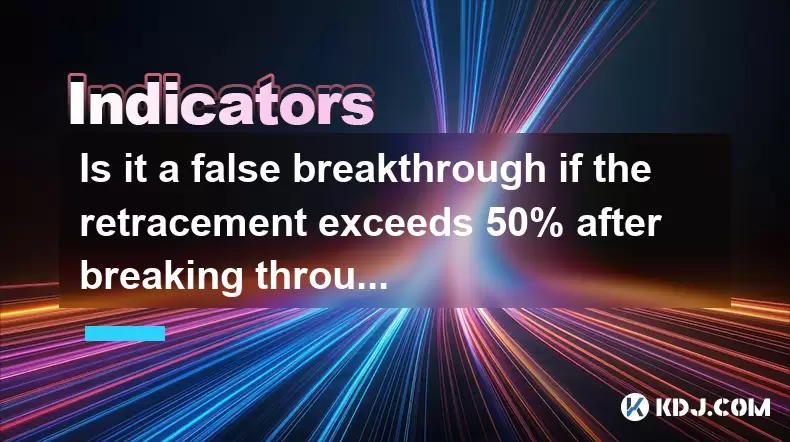
Is it a false breakthrough if the retracement exceeds 50% after breaking through the platform?
Jun 17,2025 at 08:01pm
Understanding Breakouts and Retracements in Cryptocurrency TradingIn cryptocurrency trading, breakouts refer to when the price of an asset moves beyond a defined support or resistance level with increased volume. These events often attract traders looking to capitalize on momentum. However, not all breakouts are valid. A false breakout, also known as a ...
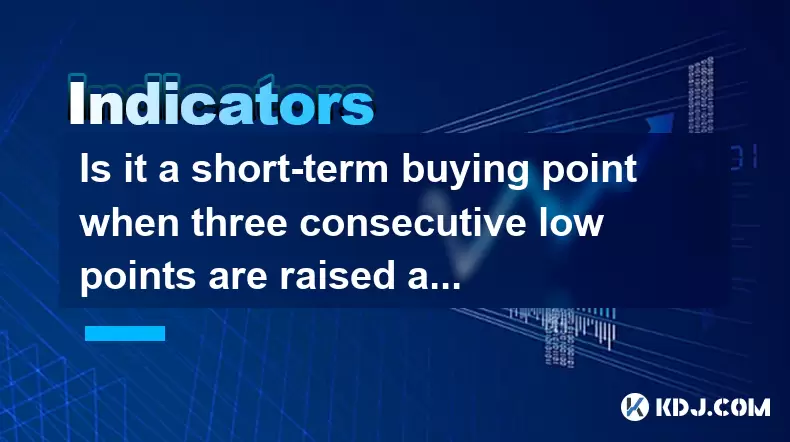
Is it a short-term buying point when three consecutive low points are raised at the 30-minute level?
Jun 17,2025 at 08:14pm
Understanding the Three Consecutive Low Points PatternIn technical analysis, identifying patterns in price movements is essential for making informed trading decisions. One such pattern that traders often observe is when three consecutive low points are raised within a specific timeframe — in this case, the 30-minute chart. This pattern suggests a poten...
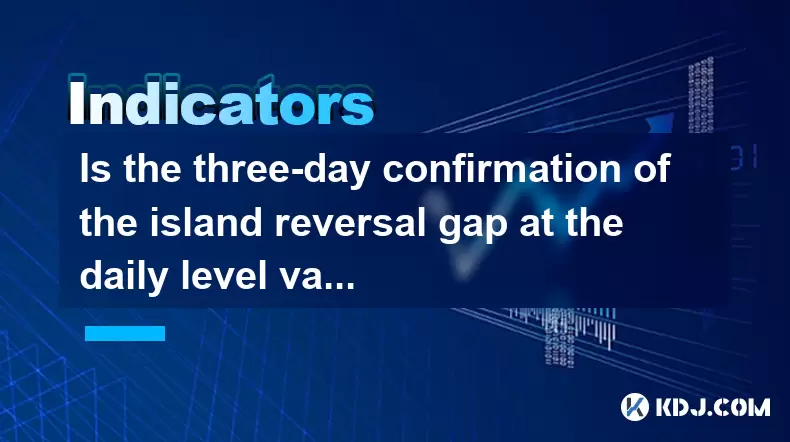
Is the three-day confirmation of the island reversal gap at the daily level valid?
Jun 17,2025 at 09:49pm
Understanding the Island Reversal Gap in Cryptocurrency TradingIn cryptocurrency trading, technical analysis plays a pivotal role in identifying potential market reversals. One such pattern is the island reversal gap, which signals a possible trend change. This pattern consists of a gap followed by a period of consolidation or sideways movement and then...
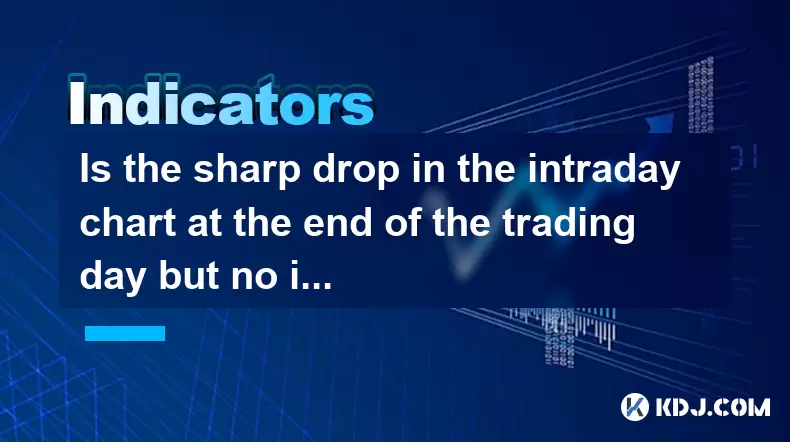
Is the sharp drop in the intraday chart at the end of the trading day but no increase in volume a trap to sell?
Jun 17,2025 at 08:35pm
Understanding the Intraday Chart DynamicsIn cryptocurrency trading, intraday charts are widely used by traders to analyze short-term price movements. These charts display price fluctuations within a single trading day and help traders make informed decisions based on real-time data. One common phenomenon observed is a sharp drop in price near the end of...
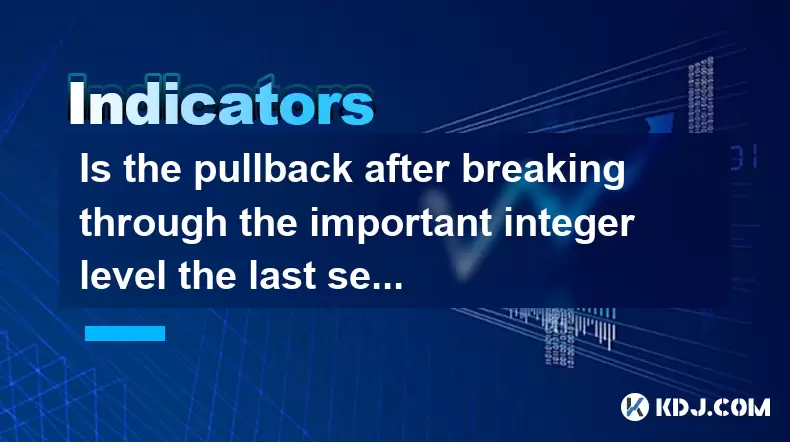
Is the pullback after breaking through the important integer level the last selling point?
Jun 17,2025 at 08:57pm
Understanding Important Integer Levels in Cryptocurrency TradingIn the world of cryptocurrency trading, certain price levels hold significant psychological and technical importance. These are commonly referred to as important integer levels—such as $10,000 for Bitcoin or $1,000 for Ethereum. These levels often act as strong support or resistance zones d...
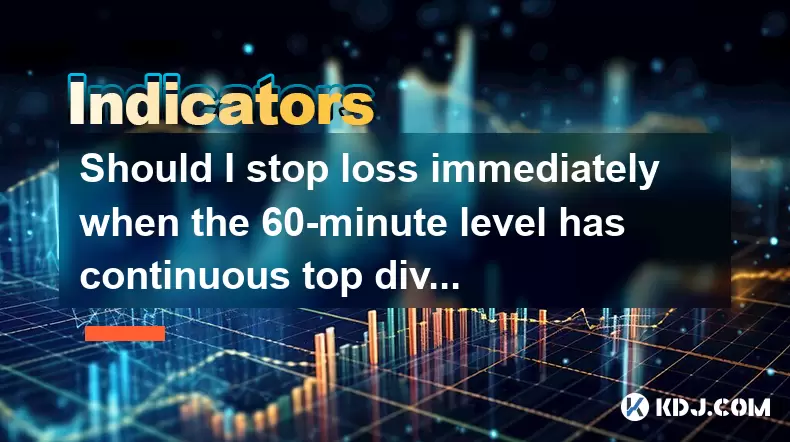
Should I stop loss immediately when the 60-minute level has continuous top divergence?
Jun 17,2025 at 05:28pm
Understanding Top Divergence in the 60-Minute ChartIn cryptocurrency trading, top divergence refers to a technical signal where the price of an asset makes higher highs while the indicator (often RSI or MACD) makes lower lows. This is commonly interpreted as a sign of weakening momentum and potential reversal. When this occurs on the 60-minute chart, it...

Is it a false breakthrough if the retracement exceeds 50% after breaking through the platform?
Jun 17,2025 at 08:01pm
Understanding Breakouts and Retracements in Cryptocurrency TradingIn cryptocurrency trading, breakouts refer to when the price of an asset moves beyond a defined support or resistance level with increased volume. These events often attract traders looking to capitalize on momentum. However, not all breakouts are valid. A false breakout, also known as a ...

Is it a short-term buying point when three consecutive low points are raised at the 30-minute level?
Jun 17,2025 at 08:14pm
Understanding the Three Consecutive Low Points PatternIn technical analysis, identifying patterns in price movements is essential for making informed trading decisions. One such pattern that traders often observe is when three consecutive low points are raised within a specific timeframe — in this case, the 30-minute chart. This pattern suggests a poten...

Is the three-day confirmation of the island reversal gap at the daily level valid?
Jun 17,2025 at 09:49pm
Understanding the Island Reversal Gap in Cryptocurrency TradingIn cryptocurrency trading, technical analysis plays a pivotal role in identifying potential market reversals. One such pattern is the island reversal gap, which signals a possible trend change. This pattern consists of a gap followed by a period of consolidation or sideways movement and then...

Is the sharp drop in the intraday chart at the end of the trading day but no increase in volume a trap to sell?
Jun 17,2025 at 08:35pm
Understanding the Intraday Chart DynamicsIn cryptocurrency trading, intraday charts are widely used by traders to analyze short-term price movements. These charts display price fluctuations within a single trading day and help traders make informed decisions based on real-time data. One common phenomenon observed is a sharp drop in price near the end of...

Is the pullback after breaking through the important integer level the last selling point?
Jun 17,2025 at 08:57pm
Understanding Important Integer Levels in Cryptocurrency TradingIn the world of cryptocurrency trading, certain price levels hold significant psychological and technical importance. These are commonly referred to as important integer levels—such as $10,000 for Bitcoin or $1,000 for Ethereum. These levels often act as strong support or resistance zones d...

Should I stop loss immediately when the 60-minute level has continuous top divergence?
Jun 17,2025 at 05:28pm
Understanding Top Divergence in the 60-Minute ChartIn cryptocurrency trading, top divergence refers to a technical signal where the price of an asset makes higher highs while the indicator (often RSI or MACD) makes lower lows. This is commonly interpreted as a sign of weakening momentum and potential reversal. When this occurs on the 60-minute chart, it...
See all articles

























































































